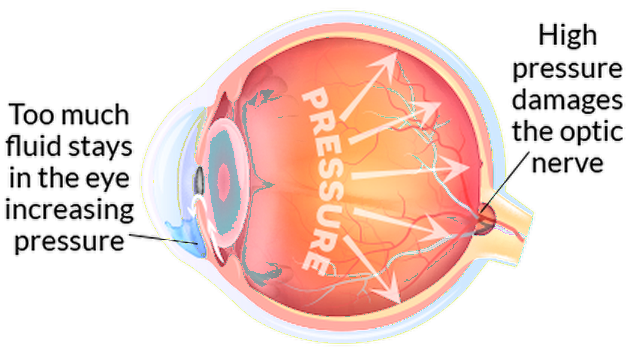
Our eyes constantly make a fluid called Aqueous Humor. As new aqueous flows into your eye, the same amount should drain out through a tiny drainage area. This process stabilises pressure in your eye (called Intra-Ocular Pressure or IOP). But if the drain is not working properly, fluid builds up. Pressure inside the eye rises, damaging the optic nerve. This is often how glaucoma develops.
Dr. Janjua will measure your eye pressure. This pressure check is called tonometry.
Each person's eye pressure is different, and there is no single correct pressure for everyone. Generally, the range for normal pressure is between 10 and 23mmHg ("mmHg" means "millimeters of mercury," a scale used to record eye pressure).
Most people who have glaucoma will have an eye pressure higher than 23 mmHg. However, some people with pressures between 10 and 23 mmHg may have glaucoma.
If you have eye pressure that is constantly higher than the range of normal (24mmHg or more), Dr Janjua may refere you to to a hospital eye service glaucoma department for determination of a clinical management plan.
